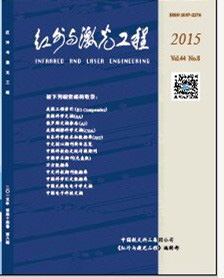Du Jianli, Li Bin, Chen Lijuan, Lei Xiangxu, Wu Manyi, Sang Jizhang. Space debris orbit determination performance analysis using accurate simulated angular and ranging data[J]. Infrared and Laser Engineering, 2016, 45(2): 229004-0229004(8). doi: 10.3788/IRLA201645.0229004
| Citation:
|
Du Jianli, Li Bin, Chen Lijuan, Lei Xiangxu, Wu Manyi, Sang Jizhang. Space debris orbit determination performance analysis using accurate simulated angular and ranging data[J]. Infrared and Laser Engineering, 2016, 45(2): 229004-0229004(8). doi: 10.3788/IRLA201645.0229004
|
Space debris orbit determination performance analysis using accurate simulated angular and ranging data
- 1.
School of Geodesy and Geomatics,Wuhan University,Wuhan 430079,China;
- 2.
Collaborative Innovation Center for Geospatial Technology,Wuhan 430079,China;
- 3.
The First Topographic Surveying Brigade of National Administration of Surveying,Mapping and Geoinformation,Xi'an 710054,China
- Received Date: 2015-06-05
- Rev Recd Date:
2015-07-03
- Publish Date:
2016-02-25
-
Abstract
Optical angles and laser ranging data are two common types of space debris accurate tracking data. After a great deal of simulated experiments, the performance of debris orbit determination and prediction were investigated using these two types of data, in an effort to understand their characteristics and use these sparse data in a better manner in the future. At first, the simulated angular data of 1 accuracy and ranging data of 1 m accuracy were generated using Consolidated Prediction Format(CPF) orbits of Starlette and Larets in January, 2015 for four observation stations in China. Then, orbit determination cases using data from single station and two stations were formed. For all orbit determination cases, data from either full pass or shorter pass were used in orbit computations. Result shows that the Orbit Prediction(OP) results using angular data are more stable than those using ranging data. Specifically, about 75% of 1-2 day OPs using angular data of two 90 second passes have accuracy better than 20. It also shows that the OP performances using two single-station passes are very similar to those using two passes from two stations.
-
References
|
[1]
|
|
|
[2]
|
Bennett J C, Sang J, Smith C, et al. Improving low-earth orbit predictions using two-line element data with bias correction[C]//Advanced Maui Optical and Space Surveillance Technologies Conference, 2012, 1:46. |
|
[3]
|
Levit C, Marshall W. Improved orbit predictions using two-line elements[J]. Advances in Space Research, 2011, 47(7):1107-1115. |
|
[4]
|
|
|
[5]
|
Smith C, Gao Y, Sang J, et al. Laser tracking of space debris for precision orbit determination[J]. Advances in the Astronautical Sciences, 2011, 142:247-256. |
|
[6]
|
|
|
[7]
|
Bennett J C, Sang J, Smith C H, et al. Accurate orbit predictions for debris orbit maneuver using ground-based lasers[J]. Advances in Space Research, 2013, 52(11):1876-1887. |
|
[8]
|
|
|
[9]
|
Sang J, Bennett J C, Smith C. Experimental results of debris orbit predictions using sparse tracking data from Mt. Stromlo[J]. Acta Astronautica, 2014, 102:258-268. |
|
[10]
|
|
|
[11]
|
|
|
[12]
|
Bennett J C, Sang J, Smith C, et al. An analysis of very short-arc orbit determination for low-Earth objects using sparse optical and laser tracking data[J]. Advances in Space Research, 2015, 55(2):617-629. |
|
[13]
|
|
|
[14]
|
Feng Hao, Liu Jing, Zhang Yao, et al. Analysis of observation capability of ground-based capability and stations to space debris[J]. Chinese Journal of Space Science, 2007, 27(6):498-504. |
|
[15]
|
|
|
[16]
|
Chen Guoping, He Bing, Zhang Zhibin,et al. Analysis of CPF ephemeris' accuracy[J]. Annals Shanghai Astronomical Observatory Chinese Academy of Sciences, 2010, 31. |
|
[17]
|
Sang J, Bennett J C. Achievable debris orbit prediction accuracy using laser ranging data from a single station[J]. Advances in Space Research, 2014, 54(1):119-124. |
|
[18]
|
|
|
[19]
|
Sang J, Bennett J C, Smith C H. Estimation of ballistic coefficients of low altitude debris objects from historical two line elements[J]. Advances in Space Research, 2013, 52(1):117-124. |
|
[20]
|
|
|
[21]
|
Saunders A, Swinerd G G, Lewis H G. Deriving accurate satellite ballistic coefficients from two-line element data[J]. Journal of Spacecraft and Rockets, 2012, 49(1):175-184. |
-
-
Proportional views

-









 DownLoad:
DownLoad: